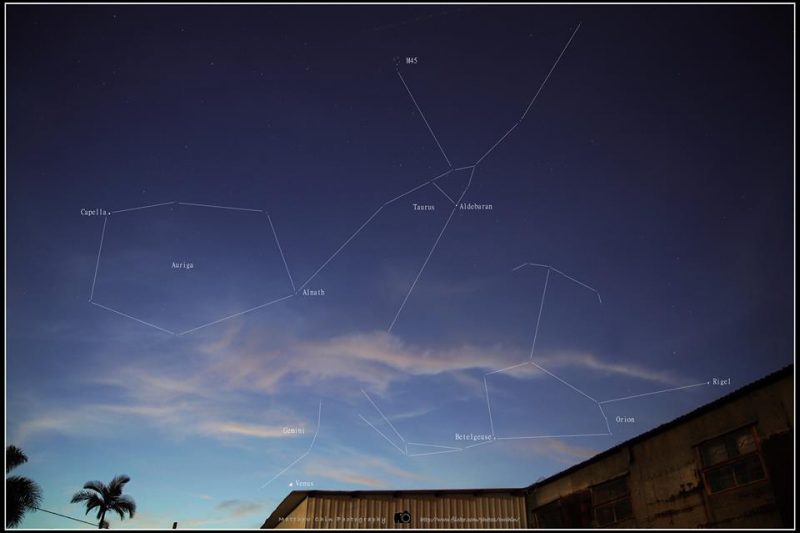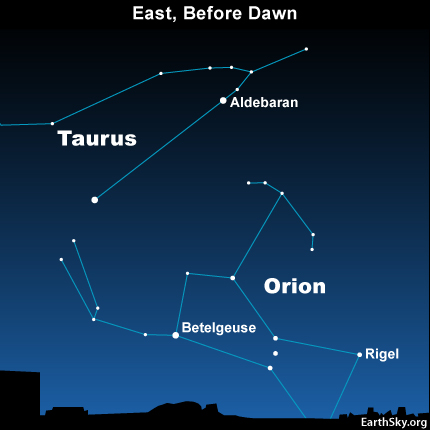
Astronomers think of the Orion Nebula – seen with the eye as a hazy patch in the sword of the constellation Orion the Hunter – as a place where new stars are being born. But modern technology is letting us see objects less massive than stars inside the Orion Nebula, too. On July 12, 2016, the European Southern Observatory (ESO) released the infrared image above of this mighty cloud of gas and dust in space. They said it’s the deepest-ever look into the Orion Nebula, revealing some 10 times as many brown dwarfs and isolated planetary-mass objects as were previously known. ESO said the discovery poses challenges for the widely accepted scenario for Orion’s star formation history.
An international team of astronomers used ESO’s HAWK-I infrared instrument on the Very Large Telescope (VLT) in Chile to probe the Orion Nebula and obtain the image. ESO said:
The famous Orion Nebula spans about 24 light-years within the constellation of Orion, and is visible from Earth with the unaided eye as a fuzzy patch in Orion’s sword. Some nebulae, like Orion, are strongly illuminated by ultraviolet radiation from the many hot stars born within them, such that the gas is ionized and glows brightly.
The relative proximity of the Orion Nebula makes it an ideal testbed to better understand the process and history of star formation, and to determine how many stars of different masses form.
ESO said the discovery of more low-mass objects in the Orion Nebula than expected is mysterious. One possible explanation is that the nebula is forming proportionally more low-mass objects than some other star formation regions:
Astronomers count up how many objects of different masses form in regions like the Orion Nebula to try to understand the star-formation process. Before this research the greatest number of objects were found with masses of about one quarter that of our sun.
The discovery of a plethora of new objects with masses far lower than this in the Orion Nebula has now created a second maximum at a much lower mass in the distribution of star counts.
These observations also hint tantalizingly that the number of planet-sized objects might be far greater than previously thought.
ESO said that, although the technology to observe these objects easily doesn’t exist yet, the planned European Extremely Large Telescope (E-ELT) – scheduled to begin operations in 2024 – is designed to pursue this observations of low-mass objects as one of its goals.


Bottom line: A deep infrared view of the Orion Nebula has revealed many more very-low-mass objects than expected.











